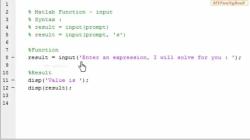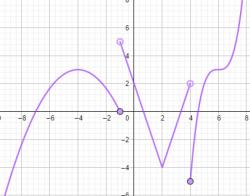What are the disadvantages of pseudo code?
Pseudo code is a high-level, informal way of representing algorithms using human-readable text. While it's a valuable tool for planning and documenting algorithms, it does have some disadvantages and limitations:
Ambiguity: Pseudo code can be somewhat ambiguous, as it often lacks a strict syntax or standardized format. This can lead to different interpretations by different readers, making it less precise compared to formal programming languages.
Lack of Standardization: There's no universal standard for pseudo code, so different authors or programmers may use different conventions and styles. This lack of standardization can make it challenging to read and understand pseudo code written by others.
No Execution: Pseudo code is not executable. It's meant to be a planning and communication tool, not something that can be run as a program. This means that errors and issues in the pseudo code may not become apparent until the actual code is written and tested.
Limited Expressiveness: Pseudo code may not be able to express complex operations or logic as precisely as a formal programming language. It lacks the rich set of operators, control structures, and libraries available in real programming languages.
Not a Universal Language: Pseudo code might not be well-suited for every audience. It assumes some level of familiarity with programming concepts, so it may not be accessible to individuals who are not well-versed in programming.
Not Executable: Pseudo code can't be directly executed, which means it cannot be used to test or debug algorithms. You still need to translate it into an actual programming language for execution.
Doesn't Handle Edge Cases: Pseudo code often focuses on the main logic of an algorithm, but it might not address all the edge cases and error handling that are crucial in real code.
Inefficiency: Pseudo code doesn't concern itself with optimization or efficiency. When translating pseudo code into a real program, you may need to make optimizations for performance and resource usage.
Difficulty in Formal Verification: Pseudo code can be difficult to formally verify for correctness. Formal methods of verification, which are essential in critical systems like aerospace or healthcare, are typically applied to code written in formal programming languages.
Not Suitable for All Projects: While pseudo code can be useful for small to medium-sized projects and simple algorithms, it might not be the best choice for extremely complex software projects where formal programming languages and methodologies are preferred.
Despite these disadvantages, pseudo code remains a valuable tool for many programmers and developers as a means of quickly planning and communicating algorithms. It can serve as a bridge between high-level problem-solving and the detailed implementation in a specific programming language. However, it's essential to recognize its limitations and use it in appropriate contexts.
Pseudo Code Disadvantages: Weighing the Pros and Cons
Pseudocode is a plain language description of an algorithm. It is often used to design and document algorithms before they are implemented in a programming language. Pseudocode can be helpful for understanding and developing algorithms, but it also has some disadvantages.
One disadvantage of pseudocode is that it is not a formal language. This means that there is no standard way of writing pseudocode, and different people may write pseudocode in different ways. This can make it difficult to read and understand pseudocode that has been written by someone else.
Another disadvantage of pseudocode is that it cannot be executed by a computer. This means that pseudocode cannot be used to test or debug algorithms.
Limitations and Challenges of Using Pseudo Code
Some of the limitations and challenges of using pseudocode include:
- Lack of standardization: As mentioned above, there is no standard way of writing pseudocode. This can make it difficult to read and understand pseudocode that has been written by someone else.
- Ambiguity: Pseudocode is often written in a natural language, which can be ambiguous. This can make it difficult to understand the exact meaning of the pseudocode.
- Lack of precision: Pseudocode is often not as precise as a programming language. This can make it difficult to translate pseudocode into a programming language without losing some of the meaning.
- Inability to test or debug algorithms: Pseudocode cannot be executed by a computer, so it cannot be used to test or debug algorithms.
Alternatives and Considerations in Algorithm Development
Some alternatives to pseudocode include:
- Flowcharts: Flowcharts are visual representations of algorithms. They can be helpful for understanding and developing algorithms, but they can also be complex and difficult to maintain.
- Natural language: Algorithms can also be described in natural language, but this can be ambiguous and difficult to understand.
- Programming languages: Algorithms can be implemented in programming languages such as Python, Java, and C++. This allows algorithms to be tested and debugged, but it can also be more complex than using pseudocode.
The best alternative to pseudocode will depend on the specific needs of the project. If the algorithm is simple and easy to understand, then pseudocode may be a good option. If the algorithm is complex or difficult to understand, then it may be better to use a different alternative, such as a flowchart or programming language.
Building Efficient Algorithms and Overcoming Pseudo Code Drawbacks
To build efficient algorithms and overcome the drawbacks of pseudocode, you can consider the following tips:
- Use a consistent style: When writing pseudocode, use a consistent style so that the pseudocode is easy to read and understand.
- Be specific: Avoid using vague or ambiguous language in your pseudocode. Be as specific as possible when describing the algorithm.
- Test your pseudocode: Once you have written your pseudocode, test it to make sure that it is correct and that it can be translated into a programming language without losing any meaning.
- Use a programming language: If the algorithm is complex or difficult to understand, consider implementing the algorithm in a programming language. This will allow you to test and debug the algorithm.
Insights and Perspectives on the Use of Pseudo Code in Programming
Pseudocode can be a helpful tool for understanding and developing algorithms. It can also be used to document algorithms before they are implemented in a programming language. However, it is important to be aware of the limitations and challenges of using pseudocode.
Here are some insights and perspectives on the use of pseudocode in programming:
- Pseudocode can be helpful for understanding algorithms. Pseudocode is written in plain language, so it is easy to understand for people who are not familiar with programming languages.
- Pseudocode can be used to develop algorithms. Pseudocode can be used to brainstorm and refine algorithms before they are implemented in a programming language.
- Pseudocode can be used to document algorithms. Pseudocode can be used to document algorithms so that other people can understand them.
- Pseudocode has some limitations. Pseudocode is not a formal language, so it is not always easy to read and understand. Pseudocode also cannot be executed by a computer, so it cannot be used to test or debug algorithms.
Overall, pseudocode is a helpful tool for understanding, developing, and documenting algorithms. However, it is important to be aware of the limitations and challenges of using pseudocode.










